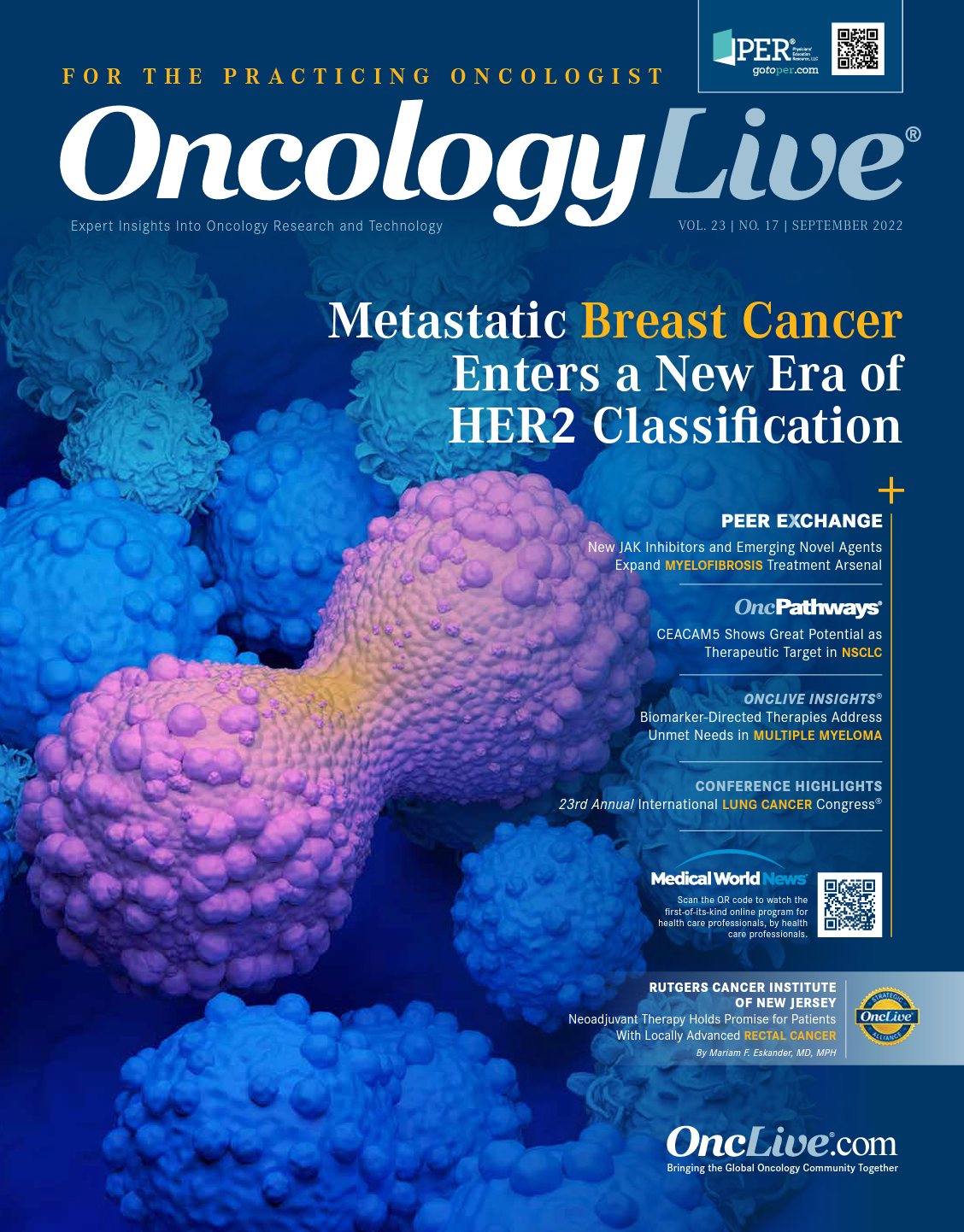AI-Powered Focal Therapy Maps Future Treatment Paradigm in Prostate Cancer
For clinicians tasked with treating patients with prostate cancer, disease visualization has traditionally consisted of imprecise techniques such as MRI. However, a new artificial intelligence-based approach by Avenda Health is poised to potentially revolutionize the treatment landscape in the field.
Brittany Berry-Pusey, PhD

For clinicians tasked with treating patients with prostate cancer, disease visualization has traditionally consisted of imprecise techniques such as MRI. However, a new artificial intelligence (AI)-based approach being developed by Avenda Health is poised to potentially revolutionize the treatment landscape in the field.
The iQuest system is a patient management software that uses AI and deep learning technology to map a patient’s prostate cancer, aiding clinicians in identifying the extent of a patient’s disease. It is meant to be paired with their proprietary FocalPoint laser ablation system, which is designed to treat localized prostate cancer under local anesthesia. Avenda believes that this dual approach can lead to improved outcomes for patients with prostate cancer with preserved quality of life.1
“Prostate cancer is unique, as it is one of the only solid cancers we cannot image very well,” Brittany Berry-Pusey, PhD, cofounder and chief operating officer of Avenda Health in Los Angeles, California, said in an interview with OncologyLive®. “On an MRI alone, radiologists can identify hot spots, but they cannot tell you exactly where the cancer is. The only way we can truly diagnose is through biopsies. [With the iQuest system], we have taken all these data—we use the MRI images, biopsy information, and pathology reports—to create a cancer probability map. We [calculate] voxel-level probability of clinically significant prostate cancer, and we help the physician identify cancer margins.”
The FocalPoint laser ablation system, also known as the Orion System, is designed to deliver targeted treatment via laser ablation and preserve the patient’s urinary and sexual function as much as possible. Using ultrasound guidance, a laser needle and sensor are inserted into the target tissue, and the needle is then heated, leading to coagulation necrosis. The system also allows the clinician to monitor tissue temperature and treatment progress in real time.2
On May 11, 2021, the FDA granted breakthrough device designation to Avenda Health for a lumpectomy product, which was eventually developed into the FocalPoint system. The designation was partially based on the results of a phase 1 trial (NCT04305925) of 10 patients, showing the system was safe and resulted in no decline in urinary or sexual function.1,3
More recently, in August 2022, the FDA awarded an investigational device exemption to the FocalPoint system powered by iQuest.1 “It is unfortunate that 50% of men with prostate cancer will have urinary or sexual dysfunction caused by their therapy,” Berry-Pusey said. “We have better solutions for these patients and [can] treat their prostate cancer [and] preserve their quality of life. That is the promise of iQuest and FocalPoint.”
iQuest Guides FocalPoint to Impressive Results
In May 2022, Priester et al presented 2 abstracts on behalf of Avenda Health at the Engineering and Urology Society 35th Annual Meeting in New Orleans, Louisiana, that demonstrated the efficacy of the iQuest system and that of the FocalPoint technique in patients with prostate cancer.4,5
The first abstract outlined the development and validation of the iQuest system. The machine learning algorithm estimates voxel-level risk of clinically significant prostate cancer and produces a 3-dimensional lesion heat map. Investigators also used whole-mount prostatectomy data to develop a novel metric, the Marks Confidence Score, that correlates the lesion heat maps with the probability of encapsulating all clinically significant prostate cancers. This ultimately aids clinicians in identifying favorable candidates for focal therapy and estimating the efficacy of proposed treatment margins.4
The model was developed using data from 875 patients from multiple institutions. Study authors input T2-weighted MRI data, surface models of the prostate, Prostate Imaging Reporting & Data System regions of interest, and tracked biopsy cores. The algorithm created lesion heat maps for 50 whole-mount prostatectomy cases, and a second set of 50 whole-mount prostatectomy findings from an outside institution were used for comparison to validate the Marks Confidence Scores.
For each case the area under the Marks Confidence curve was calculated by plotting Marks Confidence Score vs margin volume. The study authors hypothesized that patients with a high area under the Marks Confidence curve (≥ 0.6) would be favorable candidates for focal therapy.
Investigators found no significant differences between the observed clinically significant prostate cancer encapsulation rate compared with the rate predicted by the Marks Confidence Score (P = .099). The median error rate was 2% (IQR, 0%-6%). The average margin volume for clinically significant prostate cancer encapsulation was lower for patients deemed as favorable candidates for focal therapy (n = 24) compared with those who were unfavorable candidates (n = 26), at 31% and 52%, respectively (P = .001).
In the second abstract, Priester et al leveraged the iQuest system to generate treatment margins and compared the margins with those produced by the standard-of-care methodology. The standard-of-care techniques consisted of hemi-gland margins or a 10-mm isotropic expansion of MRI-visible regions of interest.5
The machine learning model margins improved sensitivity for clinically significant prostate cancer-bearing voxels (96.9%) compared with the hemi-gland margins (94.1%; P < .001). Additionally, the margins generated by the algorithm surpassed hemi-gland margins in terms of the per-patient rate of complete clinically significant prostate cancer encapsulation, at 80% vs 56%, respectively (P = .01). The iQuest system also improved clinically significant prostate cancer mean sensitivity and encapsulation rates compared with the margins calculated using 10-mm region of interest; however, the difference was not statistically significant (Table5).
Table. Efficacy of iQuest System in Defining Prostate Cancer Focal Therapy Treatment Margins5

“If we have the end goal of treating just the cancerous lesions [and] leaving the healthy prostate intact, which is the goal of focal therapy in general, you need to know where the cancer is,” Berry-Pusey said. “iQuest helps with identifying where the cancer truly is. [Then], now that we know where the cancer is, we can treat just the cancerous lesions [with FocalPoint] leaving the rest of the healthy prostate intact.” Additionally, Priester et al presented another related study at the meeting that highlighted an automated method that could be used for ablation site placement for a variety of treatment modalities, including the FocalPoint system. Study authors wrote an algorithm in Python that was designed to be a modality-agnostic method for ablation site selection.6
The algorithm required the locations of the interstitial treatment applicators to be inputted as points of origin. Three-dimensional surfaces for the prostate, region of interest, margin intended for treatment, and ablation volume were also required.
Investigators tested the algorithm on 11 unilateral and 6 bilateral margins collected from 11 patients who had previously undergone focal treatment for prostate cancer. They measured margin encapsulation of the ablation volume aggregate for 18 versions of ablation volume size and shape. Size was measured in transverse diameters (12 mm, 18 mm, and 26 mm) and the tested geometry consisted of spheres, ellipses, capsules, cubes, prims, and custom shapes for a total of 306 unique instances that were evaluated.
Findings from the study showed that the algorithm took an average of 2.25 seconds (range, 0.4-6.5) to run to completion and placed an average of 11 ablation volumes (range, 1-41). The highest rate of mean coverage occurred in prism-shaped ablation volumes (99.1%), followed by cubes (98.8%), capsules (94.4%), custom shapes (91.6%), spheres (90.0%), and ellipses (89.1%). Mean margin coverage achieved with the algorithm was significantly higher compared with manual planning, 94% vs 87%, respectively (P = .005). Study authors concluded that this methodology could potentially be used to simplify the planning process for focal treatment of prostate cancer through the automation of ablation site placement.
"Exciting" Future Awaits
The investigational device exemption from the FDA has paved the way for the iQuest and the FocalPoint systems to be used in tandem in a randomized, controlled clinical trial of patients with prostate cancer. The trial will compare the approach with the standard of care. Berry-Pusey noted that the trial will tackle the current primary limitation of the iQuest plus FocalPoint ablation approach, which is a lack of understanding of the exact superiority of the technology compared with current techniques in a controlled setting.1
The upcoming trial was designed based on outcomes from workshops conducted by the FDA to determine the best approach to conduct a clinical trial in the particular field of prostate cancer, according to Berry-Pusey. The primary outcome measure will be progression-free survival.
“We really are excited for this trial—we think that this will be the marquee study in this field,” Berry-Pusey said. “[We believe that] iQuest and FocalPoint [are] the future of prostate cancer care. We are excited to get the data and the support of our clinical partners as we improve treatment options for men with prostate cancer.”
Berry-Pusey envisions the iQuest system moving upstream in the care pathway and being used more extensively as a patient management software. She also noted that the software will be able to help clinicians with risk stratification for each individual patient and aid in identifying more personalized treatment plans.
“The personalization that iQuest creates for each patient will help patients and physicians make better decisions about their care in the future,” she said.
References
- Avenda Health receives FDA investigational device exemption for AI-enabled prostate cancer therapy. News release. Avenda Health. August 9, 2022. Accessed August 19, 2022. prn.to/3SWiVvr
- A revolution in prostate cancer therapy. Avenda Health. Accessed August 22, 2022. bit.ly/3pVhnVj
- Avenda Health granted FDA breakthrough device designation for technology to treat prostate cancer. News release. Avenda Health. May 11, 2021. Accessed August 19, 2022. bwnews.pr/3caT95R
- Priester A, Fan R, Shubert J, et al. A novel AI-derived metric identifies favorable candidates for focal therapy of prostate cancer and accurately predicts treatment margin efficacy. Presented at: Engineering and Urology Society 35th Annual Meeting; May 15, 2022; New Orleans, LA. Accessed August 19, 2022. bit.ly/3QS9ifX
- Priester A, Fan R, Shubert J, et al. Defining prostate cancer focal therapy treatment margins with a machine learning model: improvement upon hemi-gland ablation. Presented at: Engineering and Urology Society 35th Annual Meeting; May 15, 2022; New Orleans, LA. Accessed August 19, 2022. bit.ly/3QS9ifX
- Priester A, Shubert J, Bhatnagar, et al. Automatic ablation site selection for focal therapy. Presented at: Engineering and Urology Society 35th Annual Meeting; May 15, 2022; New Orleans, LA. Accessed August 19, 2022. bit.ly/3QS9ifX




